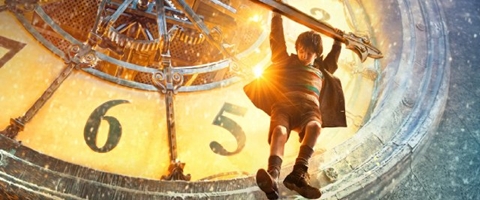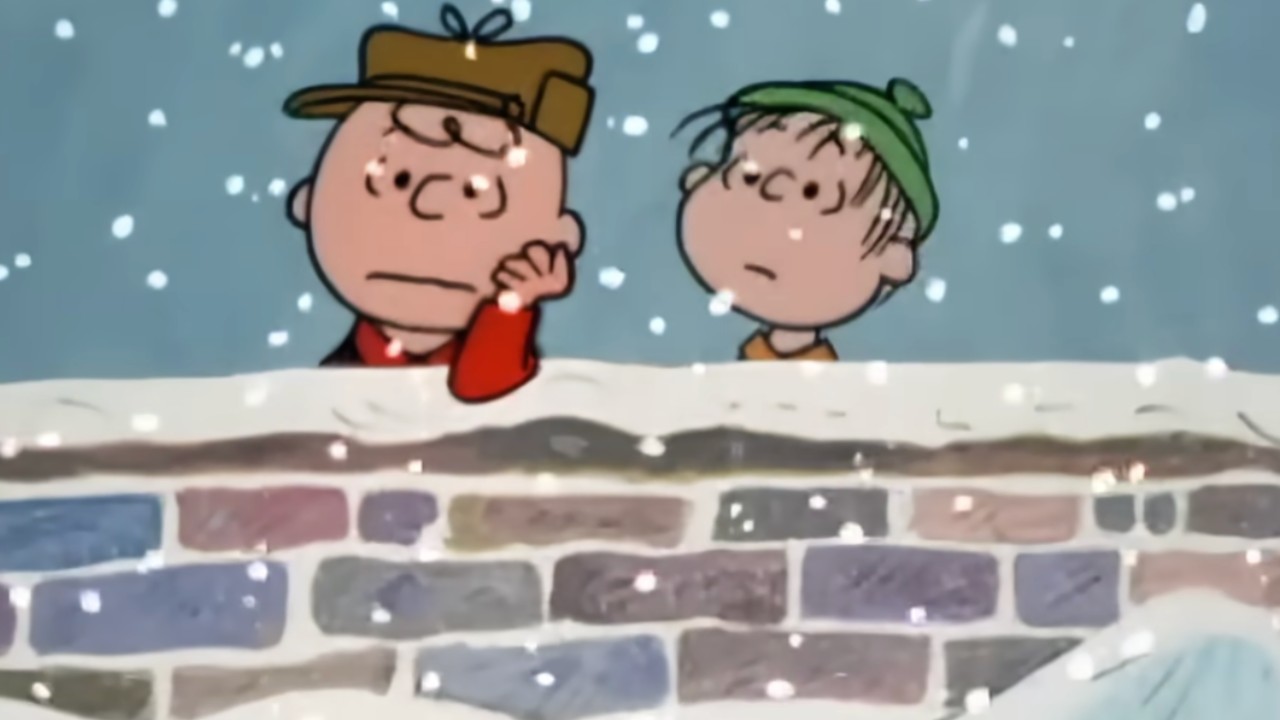Martin Scorsese’s Hugo was alive in 3D in the theater in a way that seemed to take the illustrations from Brian Selznick's book, lift them out of the pages and land them stolidly in front of us. Like Selznick’s book, which tells its story mostly through pictures and not words, Scorsese’s film tells much of its story through images, through quiet looks shared between characters, through action moving the story forward, and through a romantic display of some of the greatest moments in the history of film. It’s a shame this time around I wasn’t privy to it in 3D. Hugo begins with an exact replication, but in color, of the penciled drawings in Selznick’s The Invention of Hugo Cabret. It’s a beautiful picture, a large pan of dawn over a snow-covered city, a focus on one train station, a spotlight of a clock inside the station, a shot of just one number on the clock, and our first glimpse of the face of a small boy, our hero, Hugo Cabret.
Hugo Cabret (Asa Butterfield) is a small boy invested in the order and tidiness of everyday life. He is also an orphan who, after his father’s death, found a niche winding the clocks in the Paris train station. Hugo has very little going in his life, save his secret profession and fixing the broken automaton left to him by his late father (Jude Law).
Hugo is not the story of a small boy finding his purpose in life because, by the time we meet him, Hugo is abundant with purpose. What Hugo has in tasks to keep him occupied, he lacks in healthy relationships. Asa Butterfeld plays the pursed lip and sullen face to great effect here, but he is only one kind of lonely in a film about overcoming loneliness.
When Hugo meets Papa Georges (Ben Kingsley), we see the toyshop owner is a sorrowful kindred spirit for the young lad. If anyone could teach Hugo more about the art of pursed lips and dour faces, it is Papa Georges. Nonetheless, Papa Georges becomes a sort of problem for Hugo, as the grumpy elderly man chooses to snag Hugo’s prized notebook and spirit it away. Hugo has other problems, such as with the lonely Station Inspector (Sacha Baron Cohen) who can never seem to find the right plane to connect on with others. The Station Inspector, too, loves order, but he is consistently distraught by the lack of it. To the Inspector, Hugo is not a cog, but a great kink in the wheel.
In the span of Scorsese’s film, Hugo, too, must learn about kinks. Again and again, he cannot get his precious automaton to work. At first, he does not have the right pieces, then his notebook is taken away, and then he is missing the key to make the whole thing come together. Eventually, with a little reluctance, Hugo enlists the help of Papa Georges’ ward, Isabelle (Chloë Grace Moritz), and a greater mystery than a bit of clockwork begins to unfold.
Unlocking a mystery can have powerful ramifications, and Hugo and Isabelle set off a chain of events that swaps the gloomy shadows lurking around train station corners for magical and occasionally fuzzy glorifications celebrating the history of cinema. By charting this course, Scorsese is able to add textured side plots and characters, giving the film more of a complete story than its source material. As such, it also plays much longer and to a much older audience.
Scorsese has always been skilled at creating powerful worlds, and his vision for Hugo stands right up against some of his very best. Whether we buy into the magic of movies, the adventure story should be sufficient enough to catch our attention for the entirety of the movie, as well as some of this year’s best performances. Whether or not Scorsese’s film does a disservice to Selznick’s book is largely a matter of taste. The timeline feature when the disc is paused is beautiful, copper, matching the automation and the graphics on the menu page. In Blu-Ray the color is bold and crisp, and even without the 3D element, the whole picture pops.
Your Daily Blend of Entertainment News
The first extra is “Shoot the Moon,” a making-of segment that focuses on all the hands that delved into putting together the enormous undertaking that was Hugo. We hear from the actors, the writers, and Scorsese himself. The most important part Scorsese talks about is the idea of space and implementing that idea through many beautiful shots in 3D throughout the film. It sort of made me sad about missing the special affects this time around. I cannot say enough nice things about Hugo in 3D.
The second segment focuses on the magic of Georges Méliès' films. Through iconic footage, shots of Ben Kingsley in the role, and a history lesson from Scorsese, Selznick, and some French historians, we are able to get a better picture of how Méliès’ actual life bleeds into Hugo, and what an incredible mind Méliès lent to the world of film.
One of the other segments details the history of automatons, and points out that the automaton in Hugo actually worked. Another segment explores some of the special effects. Hugo features a pretty great scene in which a train bursts off its tracks and out the front window of the train station. These segments are informative, but they are pretty lengthy. Randomly, the last extra is dedicated to Sacha Baron Cohen’s character. Apparently, Cohen preferred not to have his actions dictated by Scorsese and would sort of do his own thing.
Ultimately, all of the extras are a pleasure to watch and seem to be choice pieces put together directly for the disc, but it would have been great to see a segment on the film's music, or maybe a few outtakes. While the Hugo Blu-Ray is carefully constructed, I will say, for the last time, if you have the capacity, please purchase the 3D.

